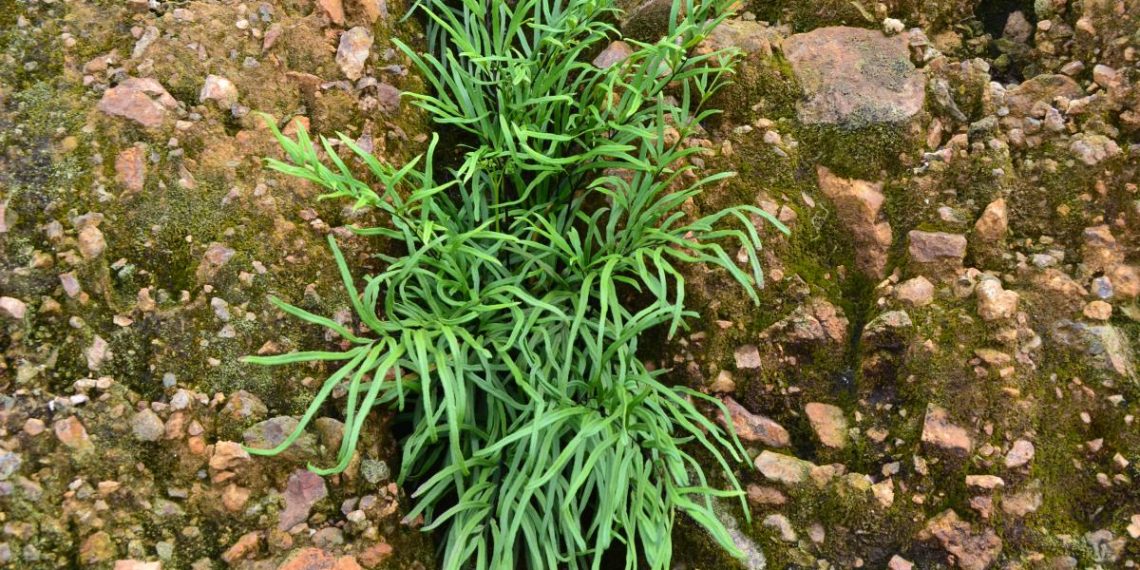Every mining company is obliged to rehabilitate the mine site once operations have ceased; but it seems that firms are struggling to do so. One of the probable reasons is that mine rehabilitation can be expensive. According to an article, the estimated cost of rehabilitating mine sites can reach as much as A$500 million; thus, most firms opt to sell or, worse, abandon the sites instead.
However, scientists from the Ateneo de Manila University (AdMU) have made a scientific breakthrough after discovering a species of fern, found to grow in two copper mining sites in the country, that has the ability to absorb high levels of copper and arsenic – a unique characteristic not known to other fern species. This presents a new, possible, and effective solution for rehabilitating mined out areas.
“It is not common for ferns to absorb both high concentrates of copper and arsenic. Plants don’t do it simultaneously in large doses. It’s something new. When we focused on ferns, there was one that stood out: the P. melanocaulon, which we didn’t see in any other mining sites we surveyed. We found it in Surigao [del Norte] and, later on, in Carmen [in Cebu province]…and this fern happens to grow in areas [within these sites] that are supposedly barren,” Dr. Rene Claveria, an environmental geology expert of AdMU was quoted as saying in a Mongabay article.

Pteris melanocaulon, or also known as P. melanocaulon, is a native fern known for absorbing heavy concentrations of metal; thus, thriving in soils with such characteristics. The mossy, open slopes left behind by open-pit mines, for instance, are said to be the perfect breeding ground for this species as it is said to contain high levels of copper and arsenic concentrates.
According to a study, the largest release of copper to the environment by anthropogenic activities is, by far, to land, approximately amounting to 97 percent. The major sources of this release include mining operations, agriculture, sludge from publicly-owned treatment works (POTWs), and municipal and industrial solid waste. Among these, mining and milling are said to contribute the most environmental waste.
Thus, with these releases, people living near copper smelters and refineries and workers in the aforementioned industries, may be exposed to high levels of copper, posing a threat to the health and well-being of these individuals.
Apart from copper, arsenic is another metal that is commonly found in mine sites.
According to a study, arsenic is known to be heavily present in gold mineral deposits. In fact, because gold ores are said to contain considerable amounts of the metal, the tailings are said to have high levels of arsenic as compared to overburdens.
What makes this metal toxic is that it is a known human carcinogen. Small amounts, when absorbed by soil and water and ingested by individuals, can pose extreme health risks to people; thus, people, especially young children living near mine sites, are mostly at risk to this contamination.
As a country known for its rich mineral deposits and its complex mining industry, this scientific breakthrough presents an efficient and effective way of environmental rehabilitation in mining areas that can benefit both the mining firms and the communities.
“P. melanocaulon is an accumulator of [arsenic], with the plant having higher amounts of arsenic than that of soil. The study noted that, while the arsenic concentration increases, the fern can efficiently absorb and store arsenic and extract it from the soil, making it an efficient arsenic accumulator and hyperaccumulator,” it was stated in the article.
With the overall data gathering and experimentation, Claveria and Teresita Perez, head researcher of AdMU, proved that the plant can be used to rehabilitate mine sites as its root system provides good soil cover and can ideally immobilize metal contaminants – that is, the plant can filter contaminated water and reduce the spread of heavy metals through the soil.
“If you use the ferns to clean up arsenic, which is very toxic, there could be colonization of succession of plants. Eventually, a year after or after one and a half years, you can already plant some high value crops in the area,” Perez stated in the article.
With the protocol in the propagation of the fern species in the books, Perez says the possibility of using the fern to rehabilitate mining soil on a large-scale project is possible. However, decision-makers should be aware of metallophytes – that is, plants that can tolerate high levels of heavy, toxic metals – and that there are indigenous plants that can be used as natural remedies to alleviate mineral-heavy soils.
“We have to recommend to our policymakers the use of indigenous plant materials to actually clean up arsenic-contaminated areas. In the past, rehabilitating mining sites involved planting invasive species – that was really a wrong move. But now, we’re propagating the idea of indigenous and endemic species so these areas can develop new ecosystems,” Perez stated.
Source:
Mongabay














